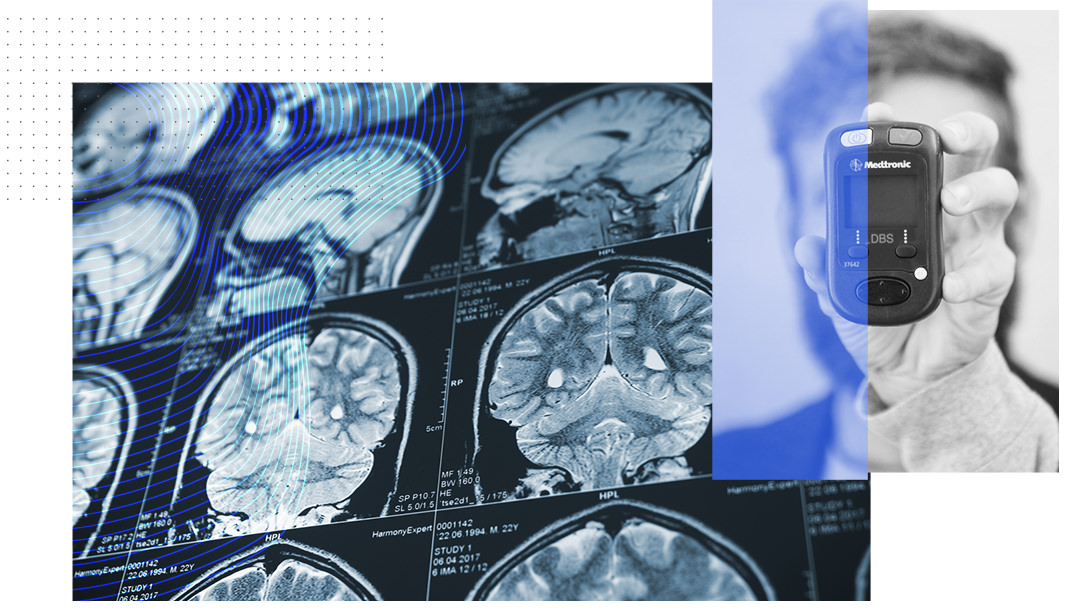Deep Brain Stimulation (DBS)
Deep Brain Stimulation, also known as DBS, is a surgical treatment of dystonia in which electrodes are strategically implanted into the patient’s brain, connected by a wire to a regulating device placed under the skin in their chest. The regulating device sends electrical impulses into the brain, altering how it behaves to certain chemicals and stimuli. In a majority of cases, DBS reduces dystonic symptoms in a way that greatly impacts the quality of life.
Initially used as a technique to locate areas of the brain for surgical lesion, DBS evolved into its category of treatment in the late 1960s and early 70s, with present-day techniques first utilized successfully in 1991. It has risen in popularity in the last 25+ years with its strong track record of helping patients and, in parallel, to swift advancements in surgical safety and general reliability.
Exact electrode location and impulse tuning are patient-specific. A pre-surgery MRI helps to inform doctors where to place leads. A patient’s conscious responses and reactions during surgery are also monitored to confirm correct placement and successful symptom reduction in real-time.

DBS is a generally safe procedure and treatment, even offering some flexibility by way of the pacemaker-like device that can be monitored and manipulated by a handheld controller to adjust impulse level and frequency. This remote control is used to fine-tune the treatment and provide maximum comfort for the user.
Both facets of the surgery, like any, come with risks and possible side-effects. As an invasive surgical treatment, DBS is recommended only for patients who have exhausted most other options, including medication, physical therapy, and alternative wellness practices.
DBS and its effects on the brain are still being studied; its technology is still being perfected. This procedure is routinely utilized in the treatment of other neurological conditions including Parkinson’s disease, epilepsy, and essential tremor. In recent years, it’s been utilized as an experimental treatment for an expanded list of conditions that includes OCD, Tourette syndrome, depression, addiction, and dementia.
Down with Dystonia Disclaimer
The medical information contained in this article is for general information only. It is not intended to provide instruction and you should not rely on this information to determine diagnosis, prognosis or a course of treatment. It is crucial that care and treatment decisions related to Dystonia and any other medical condition be made in consultation with a physician or other qualified medical professional.
Down with Dystonia is not responsible for the consequences of your decisions resulting from the use of this information, including, but not limited to, your choosing to seek or not to seek professional medical care, or from choosing or not choosing specific treatment based on the information. You should not disregard the advice of your physician or other qualified health care provider because of any information you receive from us. If you have any health care questions, please consult the relevant medical practitioner.